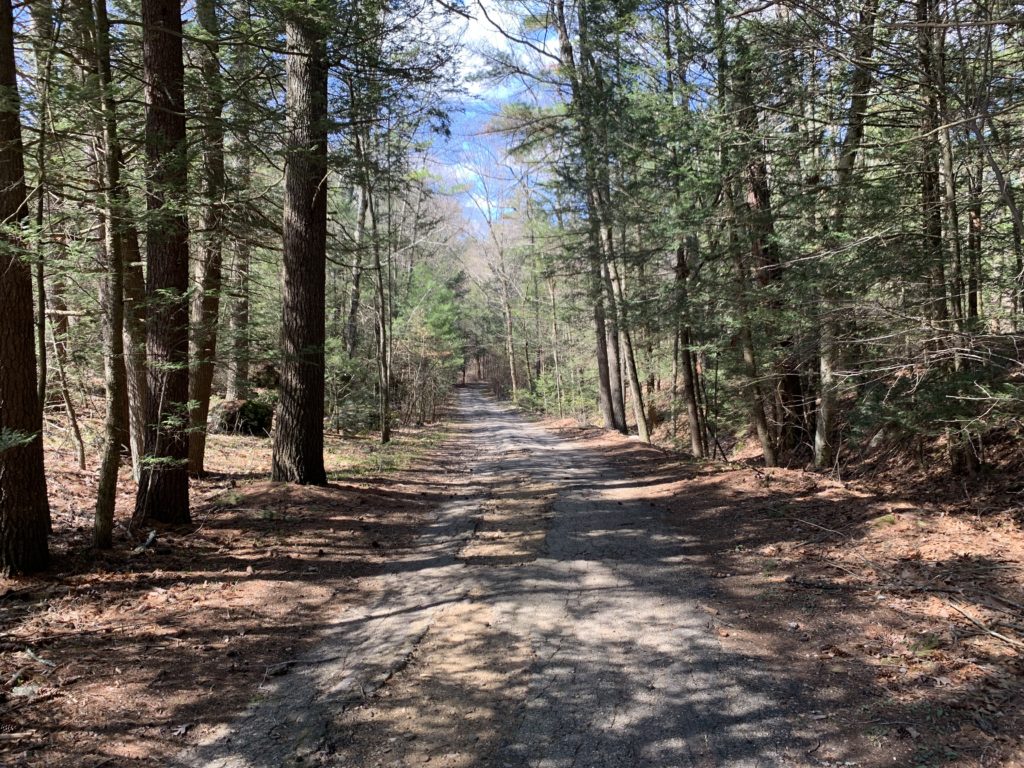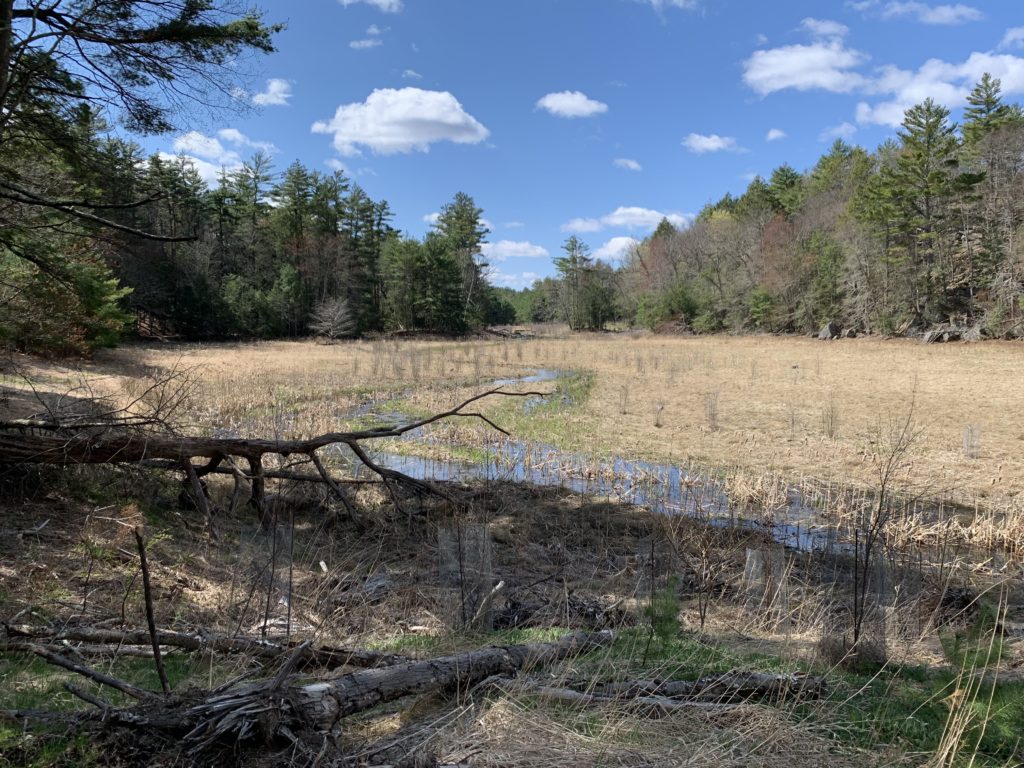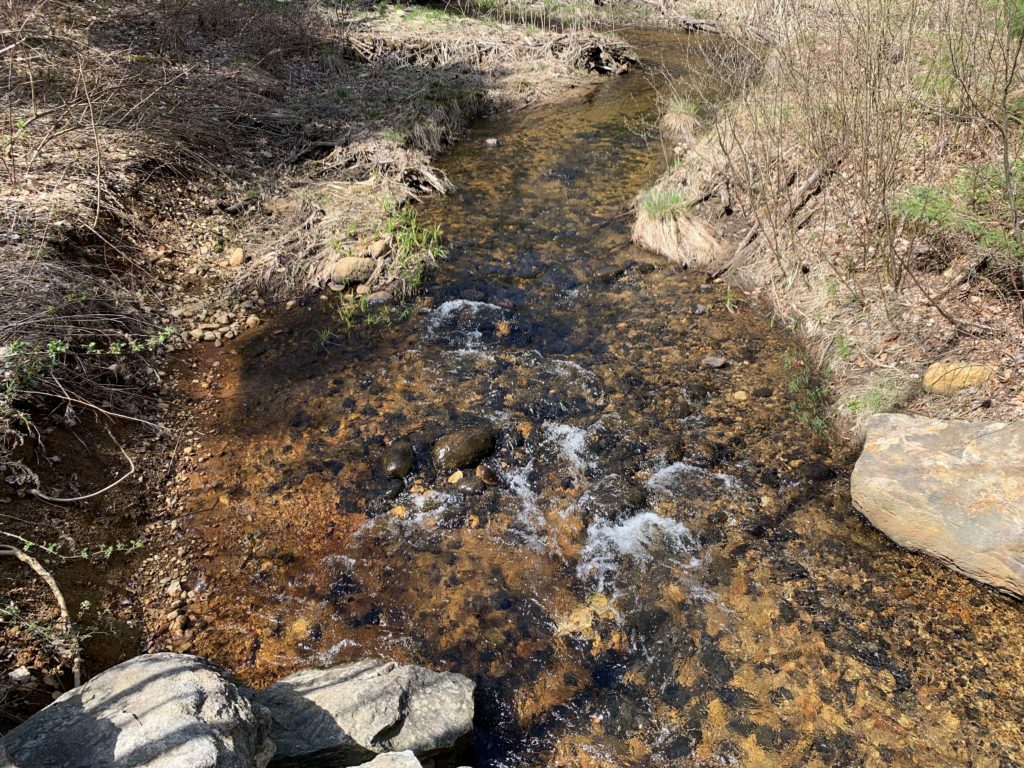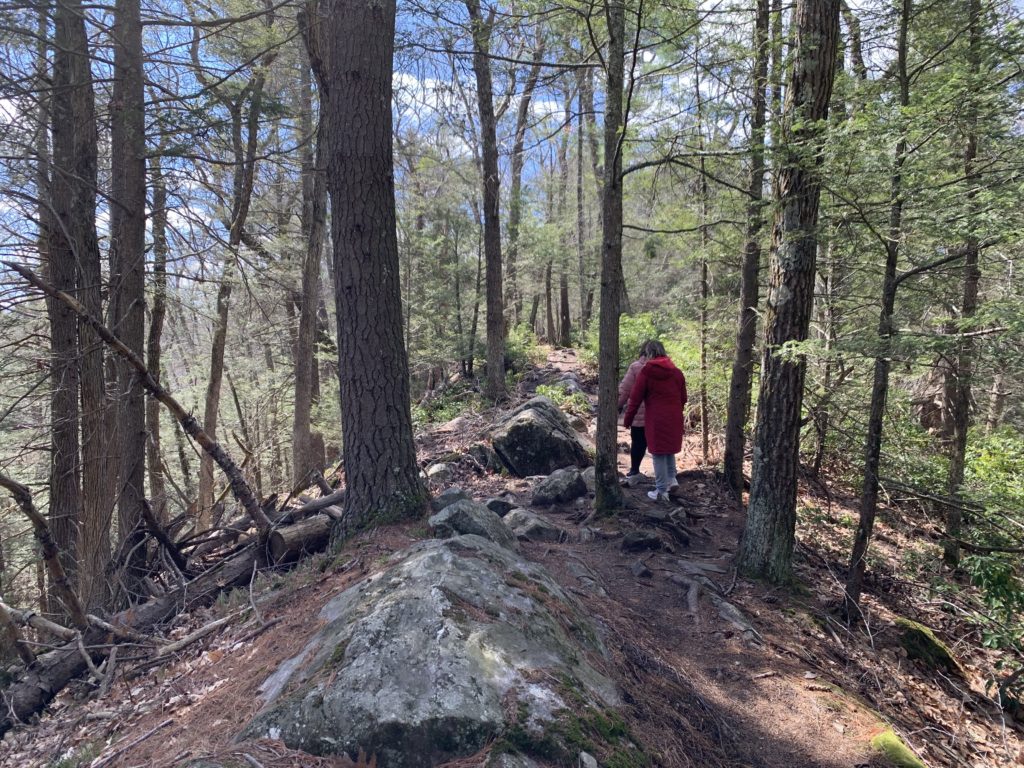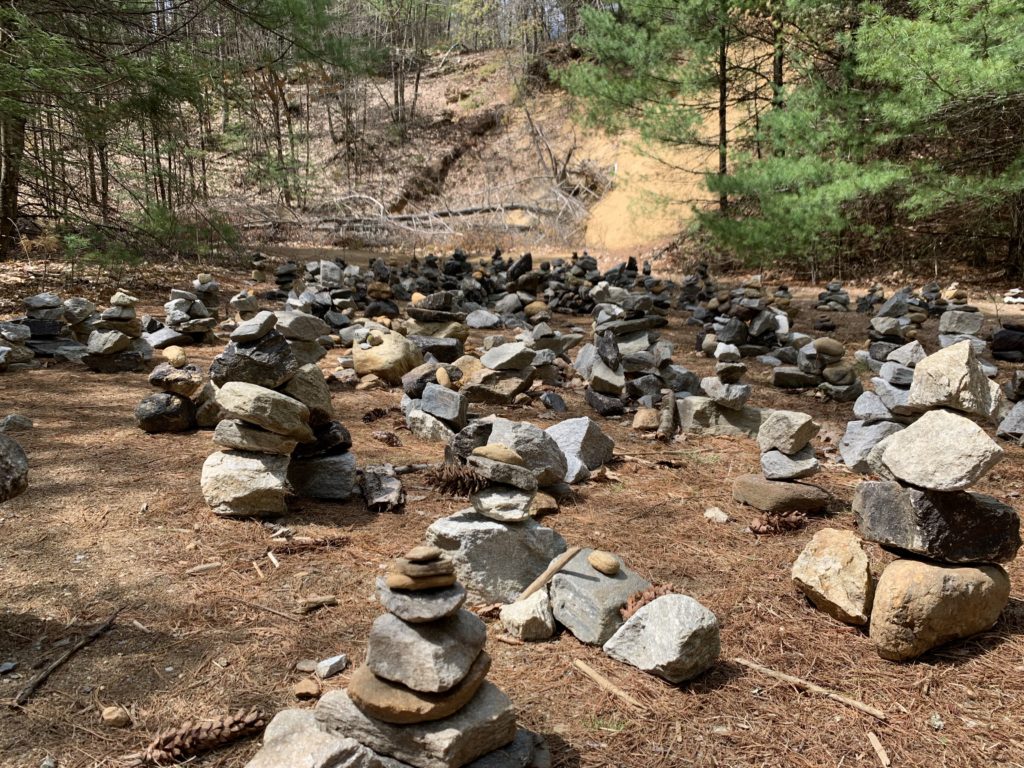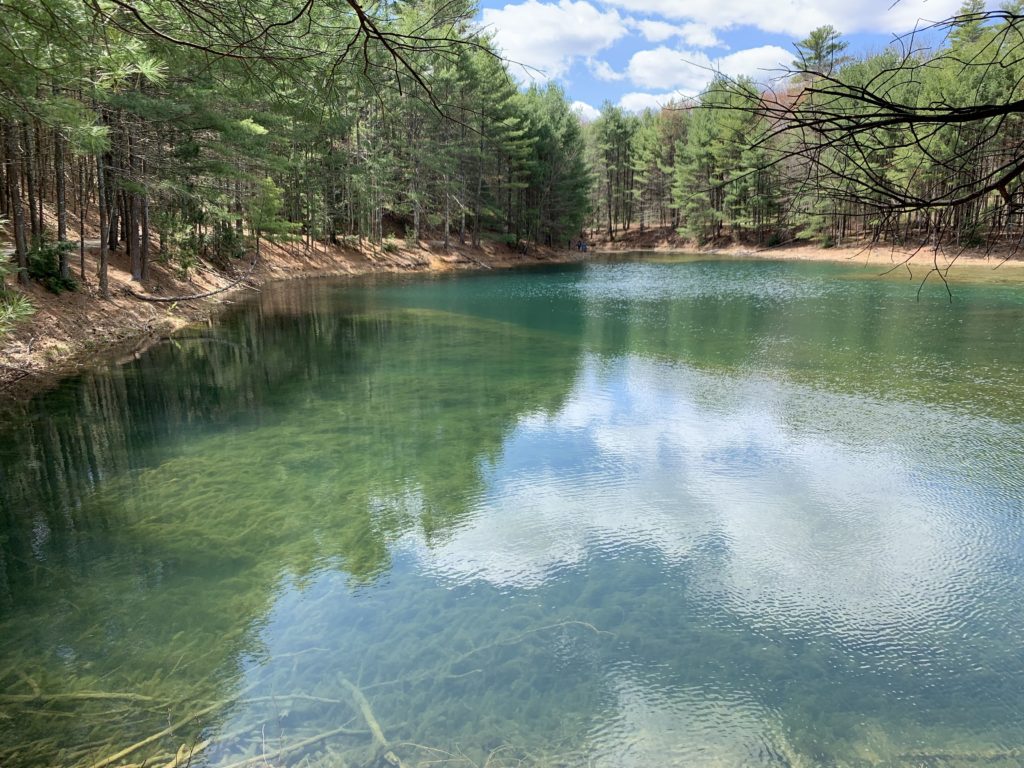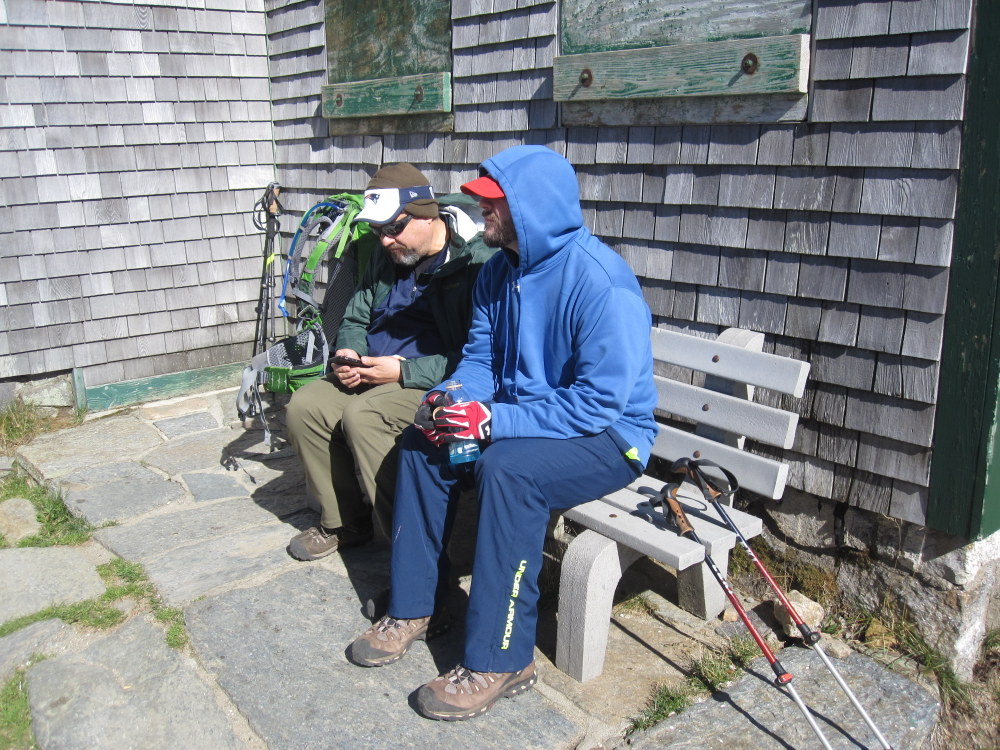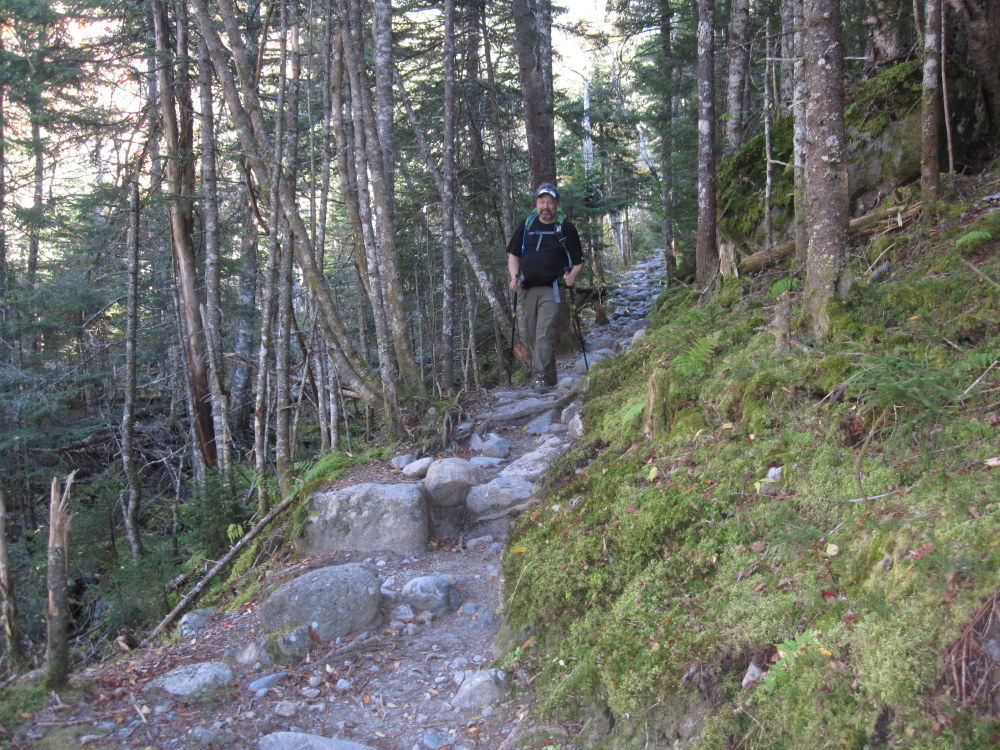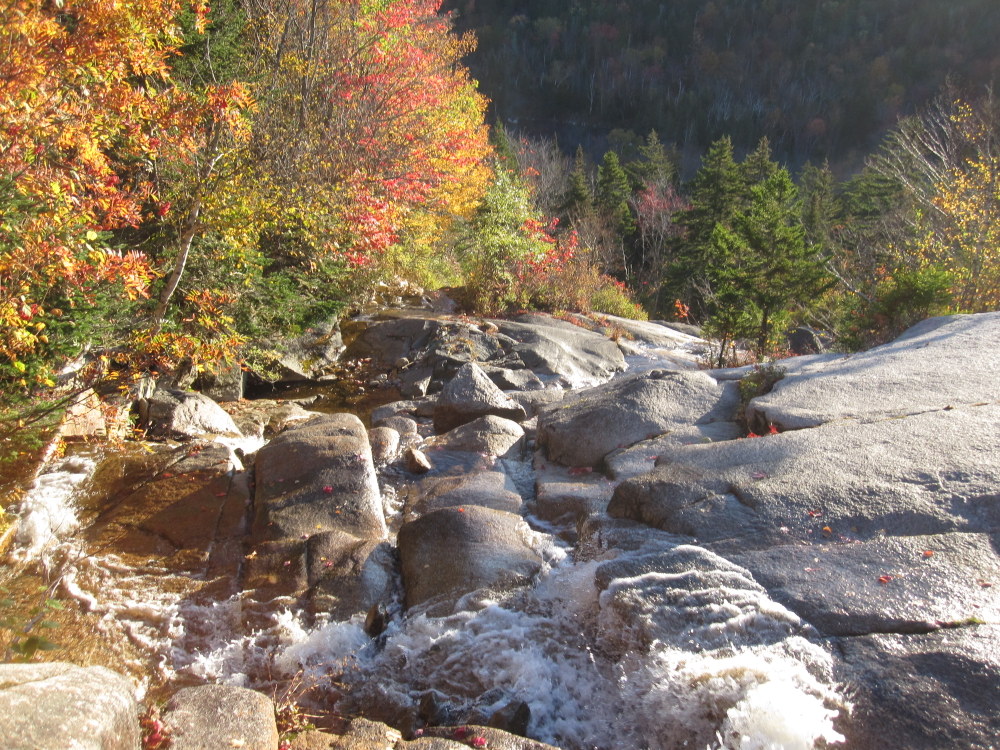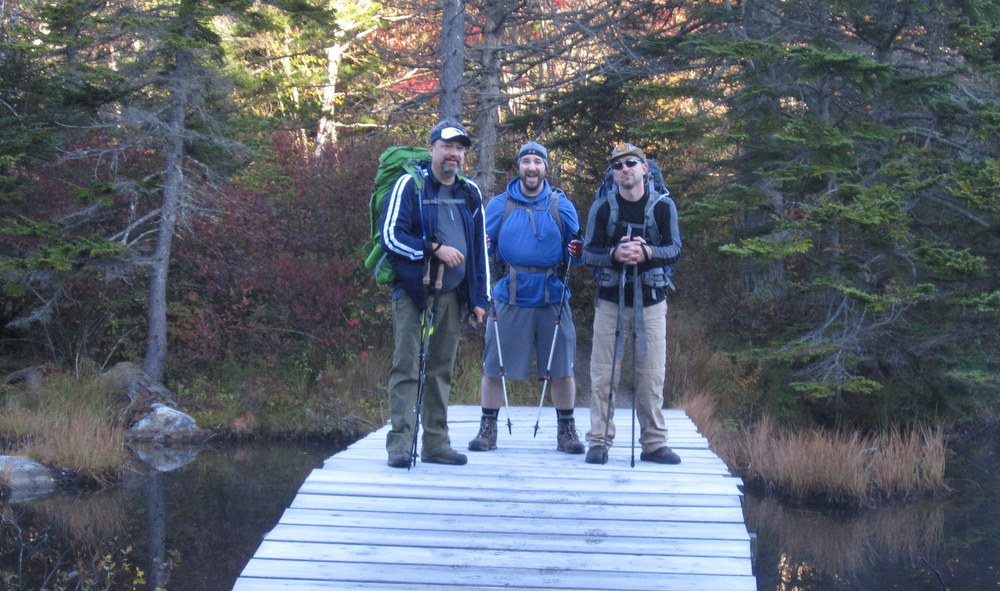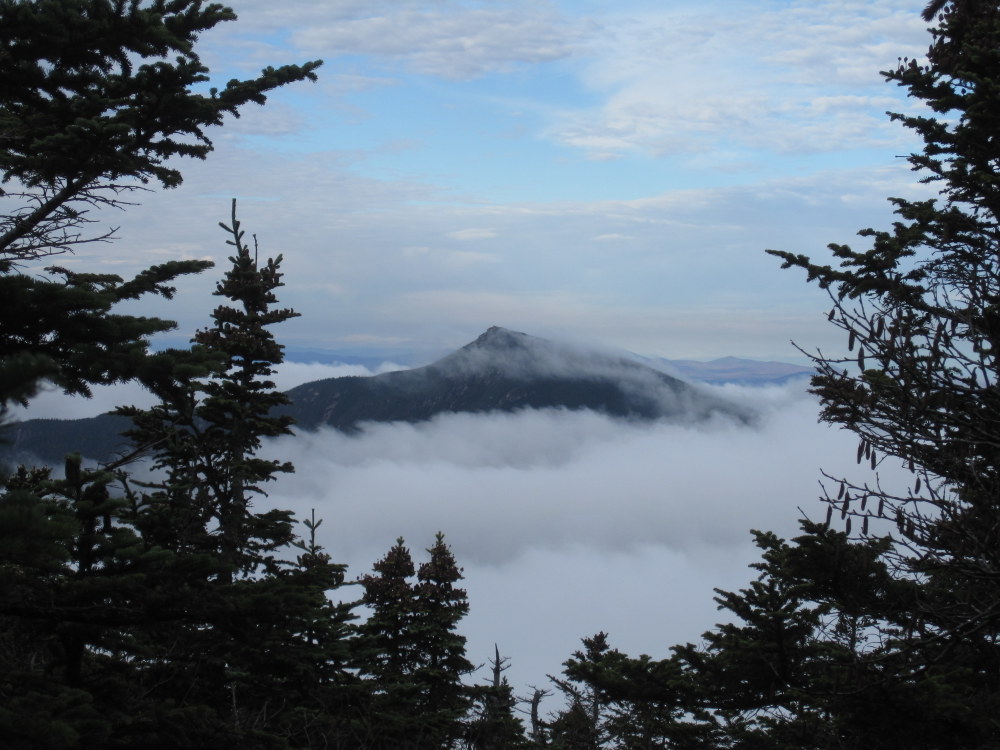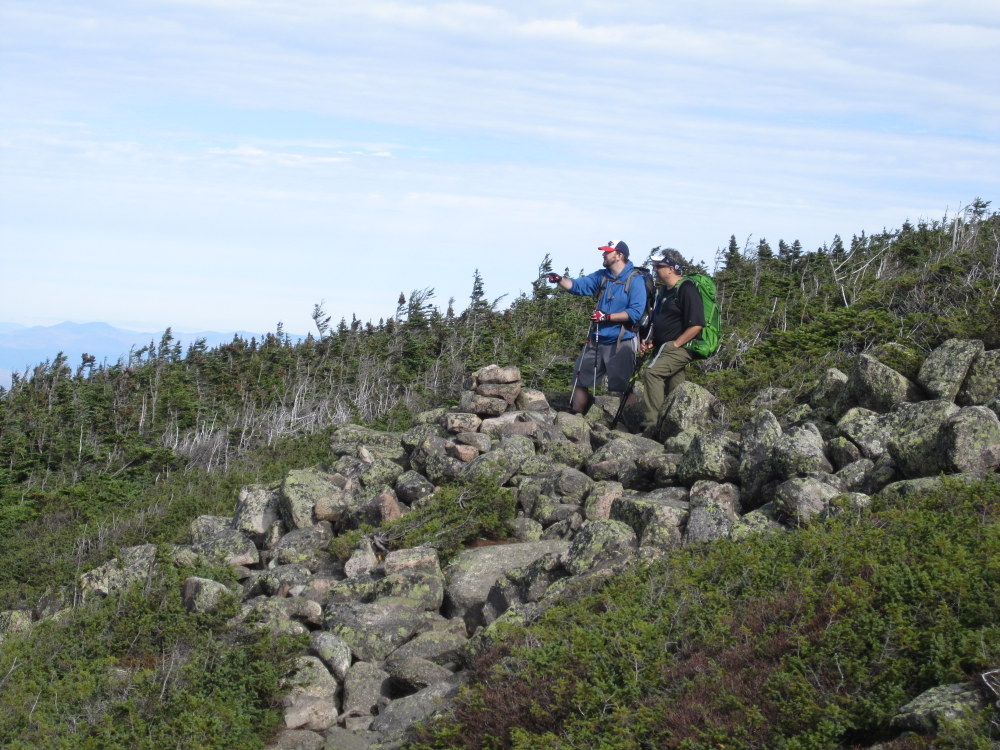During my posts about the big hike this fall, I didn’t really talk much about gear, about the specifics of nutrition, about what I carried and wished I hadn’t, and so on. So I thought a short post on those subjects might be worth doing. There will be no exciting pictures, no trail descriptions, no soul-searching moments in the mountains … so feel free to skip this post if that’s not your thing.
My Gear, Toe to Head
Feet (Boots): Keen Targhee II Mid (Waterproof)
I bought these because I’d done some hikes in the Keen Voyageur hiking shoe, and knew that Keen’s widths worked well with my feet. I have slightly wide feet and one of my feet is shaped a little differently than the other, so I need a forgiving fit. These boots had decent reviews, were waterproof, and promised to fit well. I took a chance and ordered them online (free returns if needed) and was happy with the fit. I know that many people hike, even in the Whites, using nothing but trail running shoes, but I can’t imagine the terrain we hit working with that approach. I was glad to have sturdy, waterproof boots with excellent traction and a little extra support in the ankles. Often we were hiking on very uneven terrain, pointy rocks, wet rocks, and so on. I needed the stiff soles and needed to trust the traction. That said, the looser fit these boots had made for some challenging situations as I tried to tie them tightly enough that my foot wouldn’t slip inside the boot. I had no blisters, but my toes did “mash” into the toe box a bit more than I would have liked, and I ended the hike with two black toenails.
Feet (Socks): Darn Tough Hiker Micro Crew Cushion Socks
I’ve long been an advocate of Merino wool socks for hiking, but reading up on the subject made it clear that my usual, tall, thick socks might not work like I wanted for the long days in boots. I elected for this cushion level and size after reading numerous reviews. These socks are stupid expensive ($20+ for one pair) but they are guaranteed for life. They held up great; I wore a single pair all four days and they still look like new.
Feet (Socks, part deux): Fox River Outdoor Wick Dry Alturas Ultra-Lightweight Liner Socks
I don’t remember who put me onto these, but I never would have thought of it on my own. It’s not good enough to wear the 20 dollar wool socks, you need to put a six dollar layer between you and the wool. But don’t knock it until you’ve tried it. Four days of rough hiking and I had not a single hot spot or blister. These wick moisture quickly away to the outer layers so it doesn’t cause problems. They are super-thin and caused no comfort issues at all. I highly recommend coupling these with the wool socks for extended hikes. I brought two pairs and alternated between them, and I’ll never do a long hike without them again.
Legs (Pants): Prana Stretch Zion Pants
These consistently rate near the top in almost every men’s hiking pants review, and I needed a new pair of hiking pants anyway. I wore a pair and packed a second pair as an emergency backup, but I never needed the backup. The pants dried quickly overnight, they handled the occasional abuse of me sliding on my backside on the rocks, and did a great of keeping me warm from the wind on the exposed ridge line. They have a great range of motion due to the cut and the stretchy fabric, they don’t need a belt, and they have more than enough pockets. These pants were perfect.
On this trip I wore the ordinary (not “convertible”) pants, but I’ve worn the convertible pants as well and they’re also great. Either option is a sure bet.
Base Layer (Underwear): ExOfficio Men’s Give-N-Go Sport Mesh 6″ Boxer Brief
Avert your eyes if you’re unable to talk about underwear without giggling (or just giggle quietly; I don’t care). I wore a fresh pair of underwear each day; they’re light enough that I could afford the luxury of heading out in a clean pair each morning. In general, for this kind of extended hike you want synthetic (not cotton) underwear, and most male hikers prefer the “boxer-brief” style for a number of reasons. So I tried a few different brands, and this specific style from this particular brand was the clear winner.
And, yes, these were another 20 dollar luxury item (so I couldn’t in good conscience buy a pair of these for every day). It’s even hard to justify that cost for a single pair of underwear, but they’ll be the first pair I reach for for every future hike. They were lightweight, comfortable, supportive, and fit perfectly.
Note that I also tried the EMS version of this (for about a third of the price, purchased on a clearance sale) and found them nowhere near as comfortable. I didn’t even take them on the hike, opting for some generic athletic off-brand from Target instead.
Base Layer (Shirt): Russell Athletic Men’s Performance T-Shirt
These were nothing special; I just needed a reasonably priced polyester T-shirt and these fit reasonably well and didn’t break the bank. I wore a fresh shirt each day because I’m clean (or obsessive, you decide) like that. When I arrived at each hut, I switched into a clean shirt, wore it to bed, and wore it out of the hut the next morning. Something out trading out a sweaty t-shirt for a clean one before bed made me feel more civilized….
Other Shirts: Miscellaneous polyester shirts
I packed, but did not wear, a long-sleeve polyester T-shirt from Columbia. I didn’t need it. When temperatures demanded, I wore (over my T-shirt) a zip-up polyester sweatshirt. Nothing special, just a mid-weight sweatshirt/jacket which I could easily put on and take off depending on the needs of the day.
Camp Wear: Generic sweatpants and fleece sweatshirt, big wool socks, plastic sandals
Again, nothing special, but I packed a single pair of sweatpants and an old fleece sweatshirt, which I changed into each night when arriving at each hut. I also had a couple pairs of clean wool socks in a thicker cut (doubling as emergency backups in case my Darn Tough socks got soaked or something). I had a pair of light sandals to wear over the socks (don’t judge, nobody wants to carry real shoes in their backpack) so that I wasn’t wearing two pound boots to dinner.
Warm, clean, dry clothes were key to making me feel like a human as the hiking day ended. I further justified these by thinking that I could re-use these as emergency cold weather wear if needed.
Jacket: Marmot PreCip Jacket
I debated for a long time whether to buy a lightweight waterproof jacket. If we encountered rain, I would be glad I had one. If we didn’t, I would have spent a hundred dollars on fancy waterproof material when a simple windbreaker would have done fine. In the end, I decided I should have a waterproof jacket anyway (and I didn’t), so I bought the PreCip, often considered a best “bang for the buck” value in the hiking rain jacket category. It folds down to a tiny, lightweight package, so it didn’t add much to my pack. I ended up wearing it just once, but its wind-resistance saved the day when hiking along the ridgeline on day four.
Hats: Generic beanie and visor
Again, nothing special. The beanie was useful late night and early morning in the cold huts, as well as on the ridge line on day four. The visor was all-purpose headgear when it wasn’t cold enough for a hat but I wanted the sun off my face. I’d have used a baseball cap or hiking hat but my head is huge and usually looks ridiculous in those kinds of hats. I also had a pair of thin gloves which saw limited (but appreciated) use.
Backpack: Osprey Atmos 50 AG
I splurged on a really good backpack. I knew the weight would be a big deal, and I needed to minimize its impact with an excellent frame and a good suspension system. I went to a backpacking store and let them convince me to buy the best bag they had in stock. No regrets here, even though out of all the gear it’s the least likely to see use outside of extended hiking trips. I also splurged for the Osprey waterproof pack cover, that never saw use.
Hydration: CamelBak Crux 3L
You need instant access to your water so a hydration reservoir was a necessity (having to open and close a bottle each time I took a sip would have driven me nuts). Each time I refilled it I had less than a half-liter of water left in it, so clearly I needed this large size, too. In addition, I carried 40 ounces of Gatorade each day (two 20 ounce bottles, made with instant Gatorade powder). I would drink from these whenever we stopped to eat. I probably could have gotten away with only one of those, and drank it at lunch each day, but it worked out fine to have two.
Trekking Poles: Cascade Mountain Tech 100% Carbon Fiber Trekking Poles Quick Lock
Poles are a necessity. They don’t need to be fancy, but they need to work. You have to trust them with a significant portion of your body weight. I practiced with these before the hike, dialed in how I wanted to have them in terms of pole length and walking style, and got used to how they felt. I used them for almost every step I took on the hike. On easy ground they simply spread your weight around a bit; on rough ground they turn your two-wheel drive body into a four-wheel drive off-roading machine. Like your boots, you have to trust these completely at times, so be sure you have them locked tight.
Headlamp: Black Diamond Spot Headlamp
A necessity for emergency use as well as simply getting around the huts. I picked this model due to solid reviews, dual-color (white and red, a necessity for preserving night vision) as well as using ordinary batteries (so I could bring spares).
Miscellaneous Stuff I Carried
- An Anker Powercore 13000 kept my phone charged up. I left the phone in airplane mode whenever we had no signal (most of the time) and used it chiefly for taking pictures. When we had signal, I’d usually send a few texts to reassure my family I was still alive, and then put it back in airplane mode. Each day I started at 100% and finished around 30, and would charge it back up overnight with the Anker (which is why I have so few pictures of the huts in the afternoon or evening). Well worth its weight.
- A Coleman flask filled with Glendalough Double Barrel Irish Whiskey. A couple ounces of Whiskey a night made the entire trip feel less like a survival exercise. Others brought Bourbon, and we shared freely. No need to drink to excess; nobody needs a hangover while hiking.
- A full-size cotton sheet sewn into a sleeping-bag liner shape. It was worth having a sheet to keep me a little isolated from the wool blankets.
- A toiletries and first aid bag, with hand sanitizer, Coleman Biowipes (perfect for a morning “hiker’s shower”), toilet paper (just in case), contacts, glasses, deodorant, toothbrush and toothpaste, medicines, tape, Gold Bond medicated powder (another step in the “hiker’s shower”), and more I’m probably forgetting.
- A fancy fast-drying “camp towel” which I didn’t use once and wouldn’t bring again.
- A journal, a paperback novel, and a pen. The journal and the pen, yes, worth taking. The book? Not so much. There are reading libraries at each hut.
- Emergency supplies including a small water filter, extra boot laces, a small knife, a whistle, etc. Not heavy enough to leave behind, but not really necessary for everyone to have. In a group, you can coordinate and split this responsibility up, but you need some level of this kind of stuff.
- Bags! Extra ziplock backs, extra trash bags. I had 4 kitchen trash bags in active use on the hike. One held my “hut” supplies (sheet, camp clothes), one held my dirty laundry, one held my trash, and the other held everything else. They kept my gear somewhat organized and dry even if I put my backpack down on wet ground. The extra zip-locks were great for isolating trash, keeping wet items away from dry, etc.
Miscellaneous Stuff I Didn’t Carry
Some gear that was “on the bubble” and didn’t make the cut?
- Thermal underwear. The weather forecast didn’t require it.
- A puffy jacket. I took a gamble that the fleece and the PreCip would get the job done (and I was right).
- Rain pants.
- Bug repellent.
- Binoculars.
- A lighter (I knew someone else would have it).
Nutrition
With our breakfasts and dinners taken care of, I decided on a “snack only” approach to the rest of the day. I carried three or four larger snack items (like a granola bar or protein bar) each day, supplemented with a homemade trail mix made of fruit, nuts, and starchy snack mix items (pretzels, etc). This was easier than trying to have a real “lunch” but by the end of the third day of eating the same type of “snack” at every break I was pretty sick of it. I made a critical error with the trail mix, not knowing how much to bring, and brought easily twice as much as I needed (and that was with trying to eat more to have less to carry).
Pack Weight
My “dry” pack weight at the start of the hike was around 22.5 pounds, including the weight of the bag itself. A full load of fluids (100 ounces of water, 40 ounces of Gatorade) would add almost nine more pounds, taking me over 30 pounds of weight. This would drop steadily over the day and then restart at full weight again in the morning. With my fitness level, this was probably too heavy. Losing two to four pounds from this would be a good goal for next time. Of course, we were extremely lucky when it came to weather; with real rain the pack might even be heavier with more specialty gear.


